Sport
The Champions League's new table explained
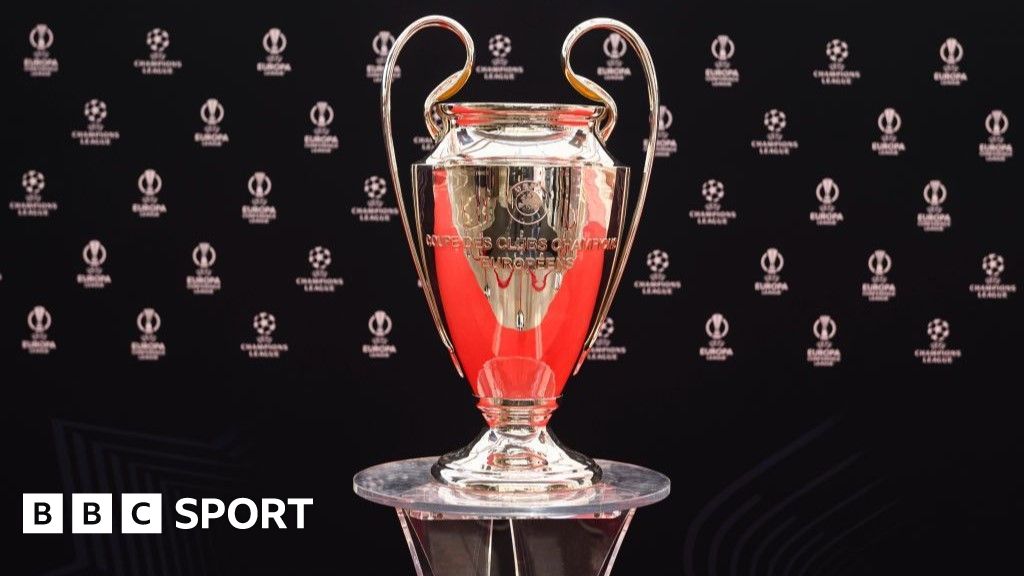
The Champions League will follow a new format from 2024-25 – BBC Sport explains what will change and what will stay the same.
Sport
Sean Dyche: Everton boss working under ‘very difficult’ circumstances
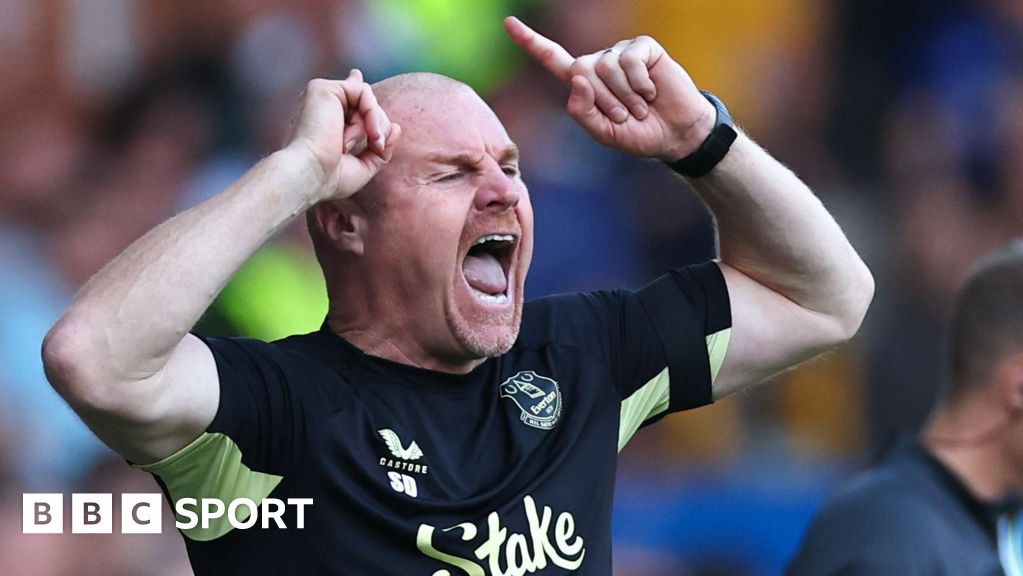
Manager Sean Dyche is working under “very difficult circumstances” amid Everton’s worst start to a league season in 66 years, says the club’s director of football Kevin Thelwell.
The Toffees are bottom of the Premier League without a point having lost all four of their games so far, conceding 13 goals.
They have the poorest record of the 96 teams in Europe’s top five leagues and were knocked out in the third round of the Carabao Cup on penalties by fellow strugglers Southampton on Tuesday.
In an exclusive interview with BBC Radio Merseyside’s Giulia Bould, Thelwell said: “Sean and I work very closely together, our offices are a metre apart so we are talking regularly and consistently about what things we can do, how we can use the resources we have available to try and make things better going forwards.
“Sean has a responsibility for the preparation and performance of the team and fundamentally the results. My responsibility is the support services that sit around that. It is about us talking through some of the performance problems we have got.”
Dyche’s contract expires at the end of the season and, despite the wretched start, club sources have told BBC Sport the 53-year-old’s job is currently safe.
Thelwell added: “I can promise everybody that there is no stone being left unturned in terms of trying to rectify our current situation. He [Dyche] is working under very difficult circumstances.
“We still have ownership and financial situations to resolve so that makes it very difficult for a manager when we want to take that next step.”
Last week, Everton said there is “some work to be done” for American businessman John Textor to complete his takeover of the club following aborted attempts by 777 Partners and the Friedkin Group this year.
The Blues are also scheduled to move to their new stadium on Bramley Moore-Dock for the start of next season.
Sport
America’s Cup: Saddling up on the high seas – the life of a cyclor
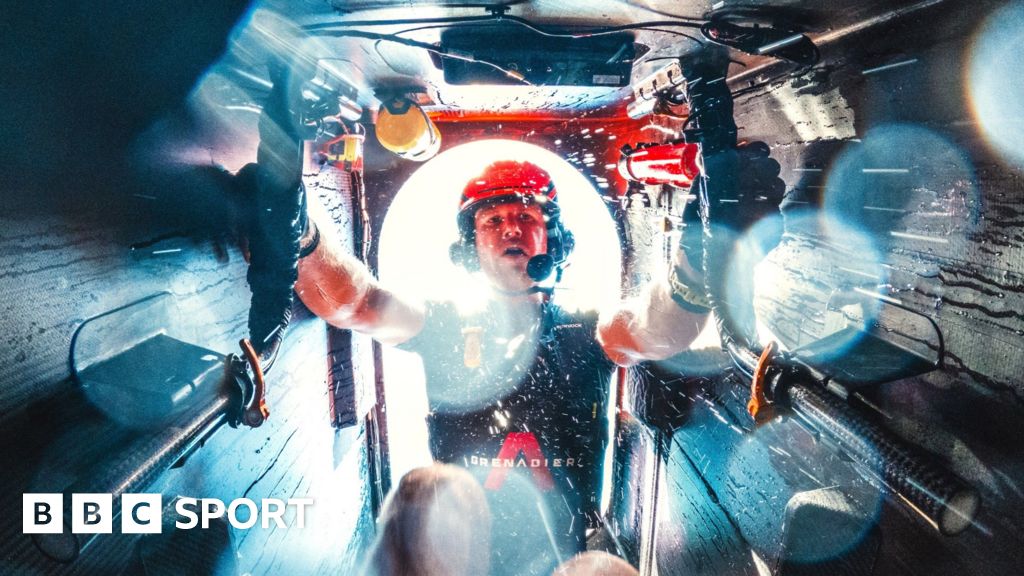
The races take place across head-to-head events that are split into two parts.
The first part – the Louis Vuitton Cup – determines which of five challengers will face this year’s defending champion Emirates Team New Zealand in the second, the America’s Cup itself.
Races take approximately 25 minutes and this year start in August and end in October.
Endurance is the key metric for cyclors, who need to be able to consistently produce a high wattage during the races themselves and maintain their form across 10 weeks.
“We just want a huge reliable engine for the three months that we’re going to be racing,” Van Velthooven says.
“Big days are big days and easy days are still big days because they still need heaps of power. It’s relentless.”
The UK’s Ineos Britannia team, led by Sir Ben Ainslie, might not have recruited professional cyclists to their crew like some of their rivals but they have the next best thing – an affiliation with the Ineos Grenadiers cycling team, formerly Team Sky and winner of seven Tours de France.
Matt Gotrel is part of Ineos Britannia’s crew. This year will be his second America’s Cup, but his first as a cyclor rather than grinder. A former Olympic gold medal-winning rower, having been part of Great Britain’s eight at Rio 2016, Gotrel has found it a “big challenge” to train a different muscle group, even if recreationally he considered himself a cyclist already.
“As rowers, we had an upside-down pyramid [body shape] before, but it’s flipped around now,” Gotrel says.
As grinders, his crew would aim to produce 400 watts of power over 20 minutes. As cyclors they are now “well north of that”.
Training for the past two years has predominantly taken place on the road or in the gym, rather than on water. Volume blocks can consist of four to six-hour-long rides, three times a week, interspersed with high-intensity intervals on a static bike and weight training.
Gotrel, from Cheltenham, Gloucestershire, compares powering the boats in a race to a cycling time trial, but with repeated sprint efforts throughout.
“You want to have a really good aerobic base where you can sit at as high a power as possible without producing too much lactate, and then you have your big spikes and need to be able to recover from those,” he says.
The connection to Ineos’ cycling team has been a “massive” resource for Gotrel and his fellow cyclors, enabling them to share training and nutritional insight on a training camp in Spain together.
“I had a chat with [sprinter Elia] Viviani about some sprinting technique, and then there are Filippo Ganna and Dan Bigham who have been really good on some of the strategy and fuelling things and what they did to push on the hour record,” says Gotrel
Sport
Moses Swaibu: From Crystal Palace youth team star to match-fixer
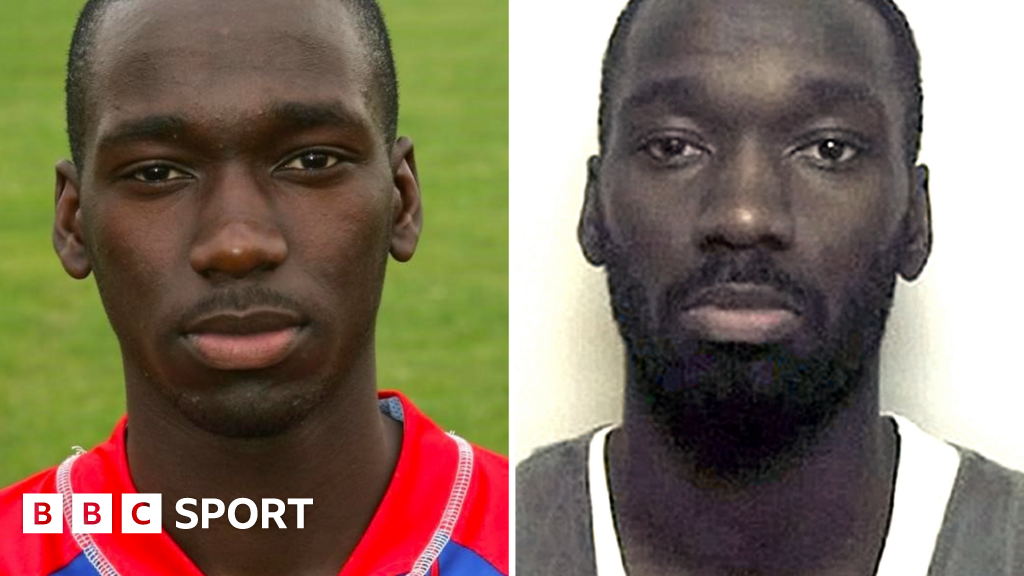
Bookmakers, usually protected and in profit thanks to margins and finely-tuned odds, were losing on National League South.
They were seeing floods of money on certain teams’ games from newly-opened accounts located all over the world – tipsters who would bet exclusively on the English sixth tier and with unerring accuracy.
More money was reportedly placed on the total goals in one November 2012 National League South game than on the equivalent market for a Champions League match involving Barcelona.
Bookmakers started refusing to take wagers on some teams, scrubbing them off the coupon. The Football Association launched an investigation into betting patterns in the division.
As the season came to a close, the fixing was an open secret in some dressing rooms. Fans were suspecting their own players, accusing them from the stands.
The situation couldn’t last. The net was closing in. Swaibu’s final Bromley fix – ensuring they lost an April 2013 fixture away to Maidenhead by two clear goals – bordered on farce.
Swaibu gave their striker a clear run on goal to score the game’s first. Into the second half, he stayed rooted to the ground as they scored again to lead 3-1. A team-mate scored in the 82nd minute to make it 3-2. Two minutes later, Swaibu held a needlessly high line, chased back aimlessly and allowed Maidenhead to make it 4-2.
An incensed team-mate who wasn’t in on the fix was sitting on the bench, telling the manager that something suspicious was unfolding in front of them.
“It was the first time it had been that blatant and obvious and I didn’t want to face the dressing room,” Swaibu says.
“I was a mouse. The bubble had popped in that moment.
“When I walked into the dressing room I couldn’t look up. It was silent, everyone looking at me.
“The only thing I could hear was the gaffer – a grown man in his fifties – weeping.
“I didn’t get in the shower, I just went straight to my car.”
Swaibu left the club two games later, at the end of the season.
He wasn’t the only fixer who realised the National League South had come under too much scrutiny.
A clutch of players left Hornchurch – another team in the league – and travelled around the world to play for Southern Stars, a lower-league team based on the outskirts of Melbourne, Australia.
Their arrival didn’t go unnoticed. Sportradar – a company hired to monitor and maintain the integrity of sports events – had suspicions. The players’ social media posts from Australia, featuring extravagant holidays in Bali and high-end nightclubs, only heightened them.
The Australian police were tipped off and the Southern Stars’ dressing room, clubhouse and even goalposts were rigged with hidden microphones.
Undercover officers posed as fans, phone calls were intercepted and bank transfers examined.
It led to a string of convictions, a clutch of leads and, ultimately, a sting operation by the National Crime Agency in south London.
By then, Swaibu could well have been out of the game, both legal and illegal.
He says he had saved up around £200,000 from fixing football.
And, at 24, playing football seemed to be over. Two short-term deals with Sutton and Whitehawk led nowhere.
“But I was addicted at this point, something was pulling me back in.”
One of Swaibu’s contacts had been tapped up by a new group of fixers – a gang trying to break into match-rigging and put together a network of players to pull it off.
Swaibu had his suspicions. The new fixers didn’t seem to know the rules. They seemed naive and inexperienced, with little idea of what was possible.
They dropped names of other match-fixers they had worked with, when discretion and secrecy were key to Swaibu’s previous bosses.
Some were also white, British and middle-aged, an unlikely profile for hi-tech gambling conspiracies, invariably leveraged from Asia.
Swaibu wanted to believe though. Because if they were new to fixing, they could be fleeced.
Swaibu says he took a photo of his local five-a-side team and told the fixers they were players in his pocket. He invited his new contacts to a League Two match between AFC Wimbledon and Dagenham and Redbridge and told them it was rigged. It would end, Swaibu said, in a 1-0 win for Wimbledon.
MMA
UFC: Where does Conor McGregor's win over Nate Diaz place him in the top 20 list of fighters?
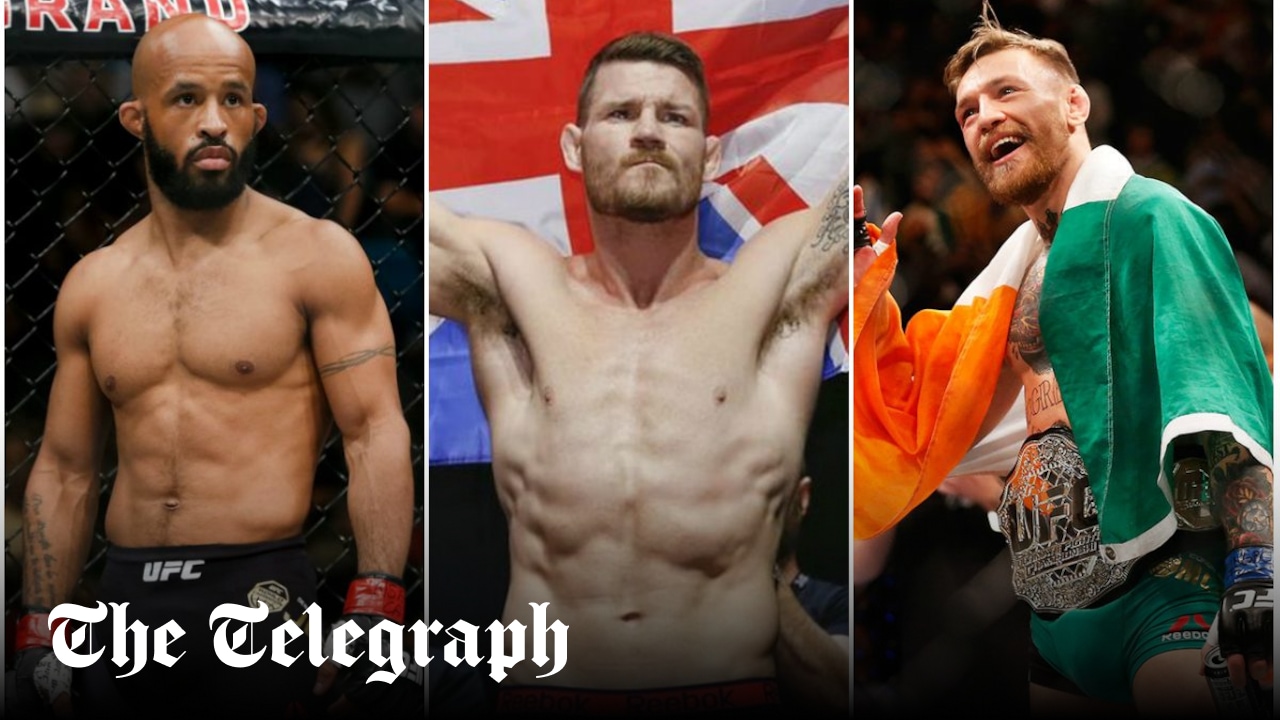

UFC: Where does Conor McGregor's win over Nate Diaz place him in the top 20 list of fighters?
Football
Salvatore Schillaci: Italy striker announces himself during 1990 World Cup
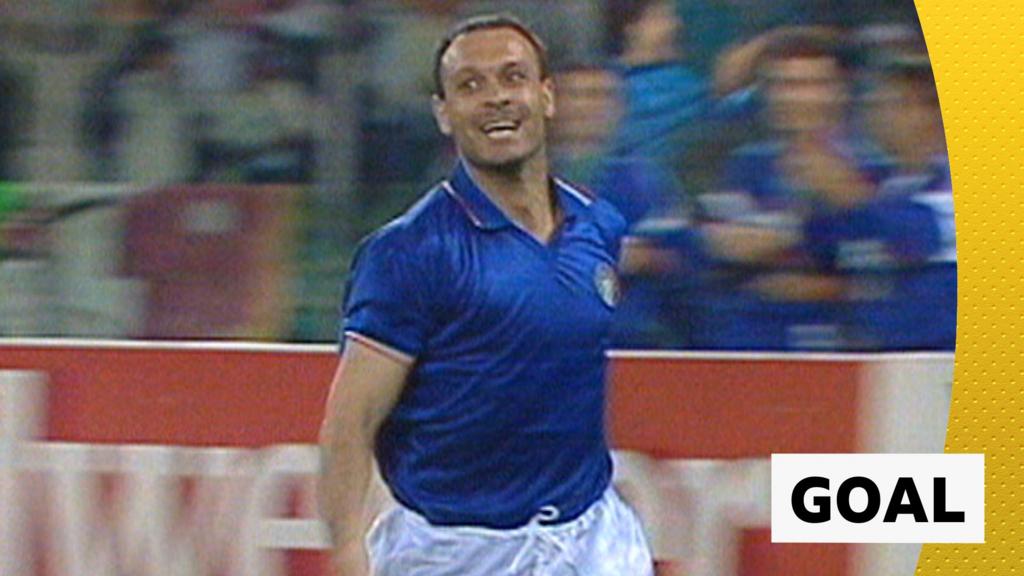
Watch the moment substitute Salvatore ‘Toto’ Schillaci announced himself on the global stage at Italia ’90 with his side’s first goal during Italy’s opening match against Austria.
Schillaci was the top scorer at the 1990 World Cup, scoring six goals to win the Golden Boot on home soil.
It was announced on Wednesday that Schillaci has died aged 59.
READ MORE: Italy’s World Cup icon Schillaci dies aged 59
Available to UK users only.
Sport
Is shooting from outside the box a dying art in football?
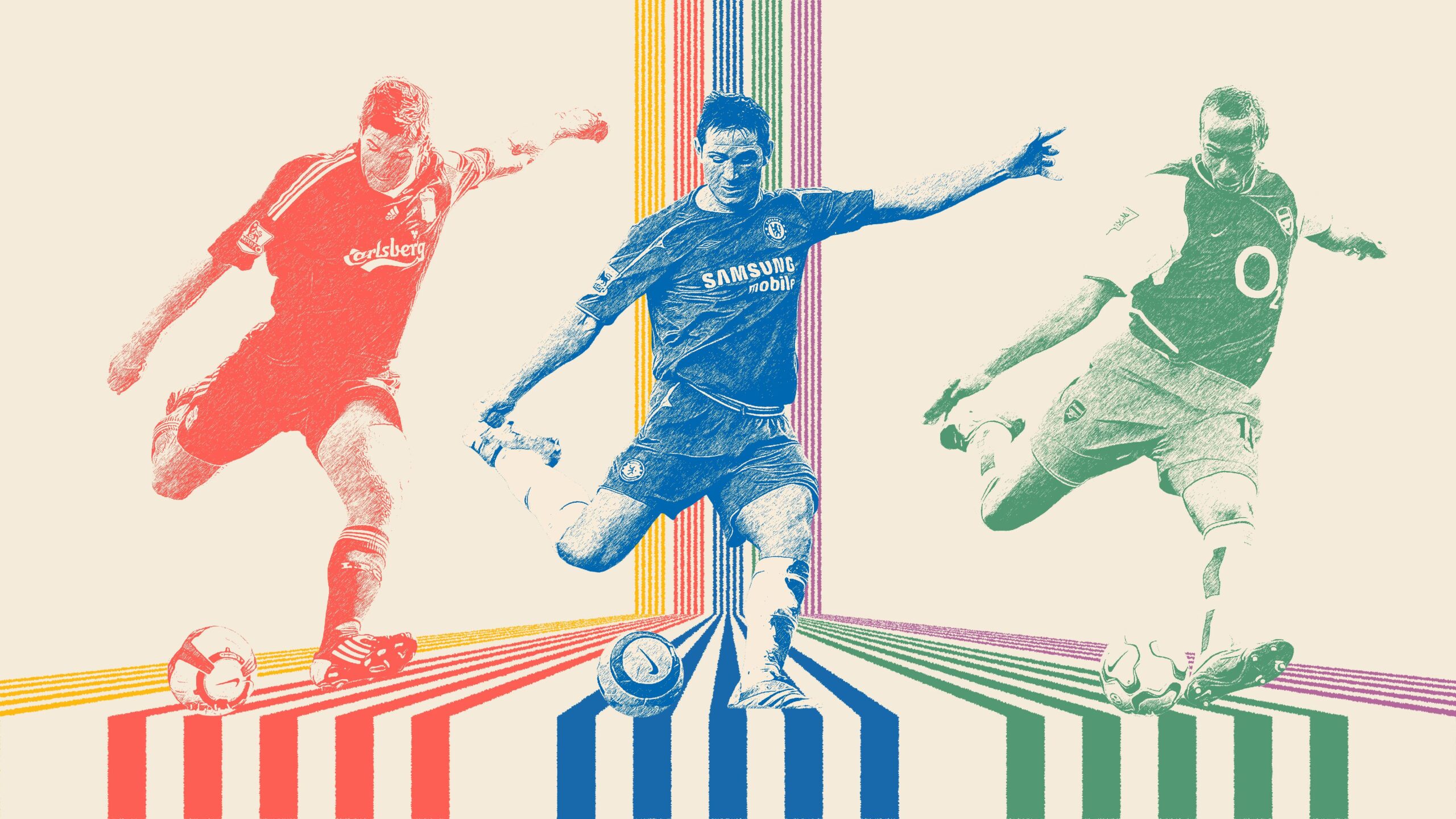
Data, tactics and small-screen fame
“I did a quick calculation,” says James Yorke, director of football at StatsBomb, one of the sport’s leading data suppliers and analytics companies.
“After about 25 yards, the expected goal value of a shot is about 0.03, so roughly one in 33 goes in. From 20 yards, that doubles, but is still only 0.06.
“Even from 12 yards – you think, ‘oh, penalty spot, that is a good chance’ – but the likelihood of scoring is still one in six.
“You have to be in the six-yard box before you are even talking about 50:50 coin flips.
“It sounds crazy – your intuition is that goals are more likely than they actually are. For any shot, everyone overestimates the likelihood of it going in.
“But there is a fundamental truth that getting closer in changes something that is highly infrequent into something that is, relatively, much more frequent.
“It doesn’t get exponentially more likely, but the curve is step.”
What Yorke is describing – an expected goals model – is one of the most basic building blocks in football analytics.
But less than a decade ago, using cold numbers to assess shooting opportunities, rather than relying on gut feeling and optimism, was revolutionary.
“Around 2012 up to 2015, expected goals models became prevalent, understood and known more widely,” says Yorke.
“You would be crazy as a coach not to incorporate what those models are telling you into what you are telling players.”
So, did data change tactics? Did coaches see in the spreadsheet that long-range goals carve themselves into our memories, but, over the season, attempting to repeat them dents their chance of victory?
There is a precedent.
In basketball, where successful long-range shots are worth three points rather than two, analytics have conversely fuelled a switch to teams taking on more attempts from distance.
But even the biggest brains in football data aren’t convinced their industry is the cause of the trend.
Speaking at the MIT Sloan Sports Analytics conference in March, Sarah Rudd – who pioneered the use of advanced statistics in football when she was brought in by Arsenal in 2012 – was asked how and why things had changed on the pitch.
“Data is forcing people to be a little more intentional in how they analyse things,” she said.
“So people now ask ‘if I shoot from outside the box what are the consequences?’”
But she also pointed out that long before mathematical models arrived the best teams tended to focus on taking higher-quality shots, closer in.
One of Rudd’s first projects at the Emirates was to assess whether, as per a common criticism of late-era Arsene Wenger, his Arsenal team were attempting to “walk it in”.
“What I found was that they were, but so were all the other good teams in the Premier League,” she said.
The numbers only confirmed the wisdom in what the best were already doing.
Alongside Rudd on the panel was Ian Graham, who, until 2023, held a similar role behind the scenes at Liverpool.
Rather than data affecting tactics, he sees the opposite: a sea-change in tactical approaches affecting the data.
“I think a decrease in shooting distance is a consequence in a change in playing style,” he said.
“Compared to 10 years ago when there was a lot of long-ball football and attempts from outside the area, teams are playing in a much more similar style to that brought in by Pep Guardiola and Jurgen Klopp.
“I think it is just a happy accident that it looks analytics related.”
High-line defences being pressed hard and fast by the opposition mean, when chances do come in today’s game, attackers have either a closer sight of goal or a clear run to it.
No longer are they feeding on knock-downs and snap-shots as deep-lying backlines keep them at arm’s length.
But Taylor’s thought process at Fratton Park in December 2006 wasn’t so complex.
As a loose ball flew up out of a contest between Nwankwo Kanu and Simon Davies, he didn’t think about high-value shots or low defensive blocks, opportunity cost or half spaces.
Instead, Taylor just noticed it sat up lovely.
Now a manager, he thinks today’s generation of players have more on their minds.
“If you sat down players from December 2006 and now, they would be two different groups of people,” he says.
“There has always been pressure internally – from your coach, team-mates and the fans in the stadium – but there is a lot more pressure externally now.
“After a match a player will shower, do their media bits, then turn their phone on and they might have 50,000 messages where they have been tagged on Twitter or Instagram.
“That is where young players – young people in general – get a lot of their information and feedback from. And all humans like praise and dislike stick.
“If you take a shot from 25 yards, it goes over and you get that criticism, the next time that chance arises you are probably going to be thinking in the back of your head, ‘if I miss again, I might get the same response’.
“Does that affect people and shape their decision-making? Of course it does, it has to.”
In November, Sky Sports’ data editor Adam Smith noticed a statistical quirk that might reinforce Taylor’s theory, that what players consume via their screens affects what they produce on the pitch.
The release of Netflix’s docuseries charting David Beckham’s career – the first episode of which zeroed in on his famous long-range goal against Wimbledon in 1996 – coincided with a four-fold increase in shots from 30 yards and beyond in the Premier League.
A few weeks later, attempts from distance seemed to fall back to their previous level.
Social media was barely born in December 2006. Podcast analysis and YouTube watch-alongs didn’t exist. Television showed fewer games and highlights were harder to find.
Social contagion spread in a more personal way.
In today’s Premier League, competing systems and processes grind a way to a result. The players are cogs in the machine.
The noughties though, was a time of alpha ball-strikers. Greatness came more often via a single act from a single actor. A bolt from the blue – or 25 yards plus – formed team’s figureheads.
The top scorers of Premier League goals from outside the box maps the era’s biggest names and rivalries: Frank Lampard of Chelsea, Steven Gerrard of Liverpool, David Beckham of Manchester United, and Thierry Henry of Arsenal.
When the ball dropped to any of them 25 yards out, was their instinct, untamed by multi-outlet criticism, to try and outshine the stars elsewhere?
While most prolific and readily associated with wonderstrikes, those names aren’t the best long-range shooters. Or, at least, not the most efficient.
Since Stats Perform started collecting the data in 2003-04, the most successful player in converting outside-of-the-box shots into goals in the Premier League is Matheus Pereira, the Brazilian who spent two seasons with West Brom between 2019 and 2021 before heading to Saudi Arabia.
Interestingly, Manchester City – known for their highly structured, intricate attack aimed at getting round the back of defences – are well represented among the most efficient long-range artists, with Bernardo Silva, Phil Foden and Sergio Aguero all in the top five.
The whole list skews more recent, suggesting current players are more picky about their chances from distance, shooting less frequently, but more successfully.
There is a silent partner in every screamer of course.
A glut of long-range goals in this summer’s European Championship turned attention on the ball, with suggestions that something about Adidas’ creation – which contained sugar cane and wood pulp – favoured strikers more than goalkeepers.
At the 2010 World Cup an above-average number of long-range goals coincided with goalkeepers claiming Adidas’ Jabulani ball had an unpredictable trajectory.
The 2006-07 and 2007-08 seasons – the two campaigns in Premier League history with the highest share of long-range goals – were both played with the Nike Total 90 Aerow II.
It was the first time that Nike had stopped mentioning the ball being “faster” in their promotional material, believing the quality had to be “inherent”. Perhaps they should have done.
-

 Sport12 hours ago
Sport12 hours agoJoshua vs Dubois: Chris Eubank Jr says ‘AJ’ could beat Tyson Fury and any other heavyweight in the world
-

 News1 day ago
News1 day agoYou’re a Hypocrite, And So Am I
-

 News13 hours ago
News13 hours agoIsrael strikes Lebanese targets as Hizbollah chief warns of ‘red lines’ crossed
-

 Sport11 hours ago
Sport11 hours agoUFC Edmonton fight card revealed, including Brandon Moreno vs. Amir Albazi headliner
-

 Technology10 hours ago
Technology10 hours agoiPhone 15 Pro Max Camera Review: Depth and Reach
-

 Science & Environment15 hours ago
Science & Environment15 hours agoHow one theory ties together everything we know about the universe
-

 Science & Environment23 hours ago
Science & Environment23 hours agoSunlight-trapping device can generate temperatures over 1000°C
-

 News10 hours ago
News10 hours agoBrian Tyree Henry on voicing young Megatron, his love for villain roles
-

 Science & Environment1 day ago
Science & Environment1 day agoQuantum time travel: The experiment to ‘send a particle into the past’
-

 CryptoCurrency12 hours ago
CryptoCurrency12 hours ago2 auditors miss $27M Penpie flaw, Pythia’s ‘claim rewards’ bug: Crypto-Sec
-

 CryptoCurrency12 hours ago
CryptoCurrency12 hours agoBitcoin miners steamrolled after electricity thefts, exchange ‘closure’ scam: Asia Express
-

 CryptoCurrency12 hours ago
CryptoCurrency12 hours agoCardano founder to meet Argentina president Javier Milei
-

 CryptoCurrency12 hours ago
CryptoCurrency12 hours agoDorsey’s ‘marketplace of algorithms’ could fix social media… so why hasn’t it?
-

 CryptoCurrency12 hours ago
CryptoCurrency12 hours agoLow users, sex predators kill Korean metaverses, 3AC sues Terra: Asia Express
-
Business11 hours ago
How Labour donor’s largesse tarnished government’s squeaky clean image
-

 Science & Environment15 hours ago
Science & Environment15 hours ago‘Running of the bulls’ festival crowds move like charged particles
-
News12 hours ago
Freed Between the Lines: Banned Books Week
-

 CryptoCurrency11 hours ago
CryptoCurrency11 hours agoEthereum is a 'contrarian bet' into 2025, says Bitwise exec
-

 Science & Environment15 hours ago
Science & Environment15 hours agoRethinking space and time could let us do away with dark matter
-

 Science & Environment12 hours ago
Science & Environment12 hours agoWe may have spotted a parallel universe going backwards in time
-

 CryptoCurrency12 hours ago
CryptoCurrency12 hours agoArthur Hayes’ ‘sub $50K’ Bitcoin call, Mt. Gox CEO’s new exchange, and more: Hodler’s Digest, Sept. 1 – 7
-

 CryptoCurrency12 hours ago
CryptoCurrency12 hours agoTreason in Taiwan paid in Tether, East’s crypto exchange resurgence: Asia Express
-

 CryptoCurrency12 hours ago
CryptoCurrency12 hours agoLeaked Chainalysis video suggests Monero transactions may be traceable
-

 CryptoCurrency12 hours ago
CryptoCurrency12 hours agoJourneys: Robby Yung on Animoca’s Web3 investments, TON and the Mocaverse
-

 CryptoCurrency12 hours ago
CryptoCurrency12 hours agoLouisiana takes first crypto payment over Bitcoin Lightning
-

 CryptoCurrency12 hours ago
CryptoCurrency12 hours agoAre there ‘too many’ blockchains for gaming? Sui’s randomness feature: Web3 Gamer
-

 CryptoCurrency12 hours ago
CryptoCurrency12 hours agoCrypto whales like Humpy are gaming DAO votes — but there are solutions
-

 CryptoCurrency12 hours ago
CryptoCurrency12 hours agoHelp! My parents are addicted to Pi Network crypto tapper
-

 CryptoCurrency12 hours ago
CryptoCurrency12 hours ago$12.1M fraud suspect with ‘new face’ arrested, crypto scam boiler rooms busted: Asia Express
-

 CryptoCurrency12 hours ago
CryptoCurrency12 hours ago‘Everything feels like it’s going to shit’: Peter McCormack reveals new podcast
-

 Science & Environment15 hours ago
Science & Environment15 hours agoFuture of fusion: How the UK’s JET reactor paved the way for ITER
-

 CryptoCurrency12 hours ago
CryptoCurrency12 hours agoSEC sues ‘fake’ crypto exchanges in first action on pig butchering scams
-

 CryptoCurrency12 hours ago
CryptoCurrency12 hours agoFed rate cut may be politically motivated, will increase inflation: Arthur Hayes
-

 CryptoCurrency12 hours ago
CryptoCurrency12 hours agoDecentraland X account hacked, phishing scam targets MANA airdrop
-

 CryptoCurrency12 hours ago
CryptoCurrency12 hours agoCZ and Binance face new lawsuit, RFK Jr suspends campaign, and more: Hodler’s Digest Aug. 18 – 24
-

 CryptoCurrency12 hours ago
CryptoCurrency12 hours agoCertiK Ventures discloses $45M investment plan to boost Web3
-

 CryptoCurrency12 hours ago
CryptoCurrency12 hours agoMemecoins not the ‘right move’ for celebs, but DApps might be — Skale Labs CMO
-

 CryptoCurrency12 hours ago
CryptoCurrency12 hours agoTelegram bot Banana Gun’s users drained of over $1.9M
-

 CryptoCurrency12 hours ago
CryptoCurrency12 hours agoDZ Bank partners with Boerse Stuttgart for crypto trading
-

 CryptoCurrency12 hours ago
CryptoCurrency12 hours agoRedStone integrates first oracle price feeds on TON blockchain
-

 CryptoCurrency12 hours ago
CryptoCurrency12 hours agoBitcoin bulls target $64K BTC price hurdle as US stocks eye new record
-

 CryptoCurrency12 hours ago
CryptoCurrency12 hours agoSEC asks court for four months to produce documents for Coinbase
-

 CryptoCurrency12 hours ago
CryptoCurrency12 hours ago‘No matter how bad it gets, there’s a lot going on with NFTs’: 24 Hours of Art, NFT Creator
-

 CryptoCurrency11 hours ago
CryptoCurrency11 hours agoBlockdaemon mulls 2026 IPO: Report
-
Business11 hours ago
Thames Water seeks extension on debt terms to avoid renationalisation
-

 Politics11 hours ago
Politics11 hours agoI’m in control, says Keir Starmer after Sue Gray pay leaks
-
Politics11 hours ago
‘Appalling’ rows over Sue Gray must stop, senior ministers say | Sue Gray
-
Business10 hours ago
UK hospitals with potentially dangerous concrete to be redeveloped
-
Business10 hours ago
Axel Springer top team close to making eight times their money in KKR deal
-

 News10 hours ago
News10 hours ago“Beast Games” contestants sue MrBeast’s production company over “chronic mistreatment”
-

 News10 hours ago
News10 hours agoSean “Diddy” Combs denied bail again in federal sex trafficking case
-

 News10 hours ago
News10 hours agoSean “Diddy” Combs denied bail again in federal sex trafficking case in New York
-

 News10 hours ago
News10 hours agoBrian Tyree Henry on his love for playing villains ahead of “Transformers One” release
-

 News10 hours ago
News10 hours agoBrian Tyree Henry on voicing young Megatron, his love for villain roles
-

 CryptoCurrency9 hours ago
CryptoCurrency9 hours agoCoinbase’s cbBTC surges to third-largest wrapped BTC token in just one week
-

 Technology3 days ago
Technology3 days agoYouTube restricts teenager access to fitness videos
-

 News14 hours ago
News14 hours agoChurch same-sex split affecting bishop appointments
-

 Politics2 days ago
Politics2 days agoTrump says he will meet with Indian Prime Minister Narendra Modi next week
-

 Politics1 day ago
Politics1 day agoWhat is the House of Lords, how does it work and how is it changing?
-

 Politics1 day ago
Politics1 day agoKeir Starmer facing flashpoints with the trade unions
-

 Health & fitness2 days ago
Health & fitness2 days agoWhy you should take a cheat day from your diet, and how many calories to eat
-

 Technology13 hours ago
Technology13 hours agoFivetran targets data security by adding Hybrid Deployment
-

 Science & Environment1 day ago
Science & Environment1 day agoElon Musk’s SpaceX contracted to destroy retired space station
-

 Science & Environment19 hours ago
Science & Environment19 hours agoQuantum ‘supersolid’ matter stirred using magnets
-

 MMA11 hours ago
MMA11 hours agoUFC’s Cory Sandhagen says Deiveson Figueiredo turned down fight offer
-

 MMA11 hours ago
MMA11 hours agoDiego Lopes declines Movsar Evloev’s request to step in at UFC 307
-

 Football11 hours ago
Football11 hours agoNiamh Charles: Chelsea defender has successful shoulder surgery
-

 Football11 hours ago
Football11 hours agoSlot's midfield tweak key to Liverpool victory in Milan
-

 Science & Environment15 hours ago
Science & Environment15 hours agoHyperelastic gel is one of the stretchiest materials known to science
-

 Science & Environment15 hours ago
Science & Environment15 hours agoHow to wrap your head around the most mind-bending theories of reality
-

 Technology2 days ago
Technology2 days agoCan technology fix the ‘broken’ concert ticketing system?
-

 Fashion Models11 hours ago
Fashion Models11 hours agoMiranda Kerr nude
-

 Fashion Models11 hours ago
Fashion Models11 hours ago“Playmate of the Year” magazine covers of Playboy from 1971–1980
-

 Science & Environment19 hours ago
Science & Environment19 hours agoA new kind of experiment at the Large Hadron Collider could unravel quantum reality
-
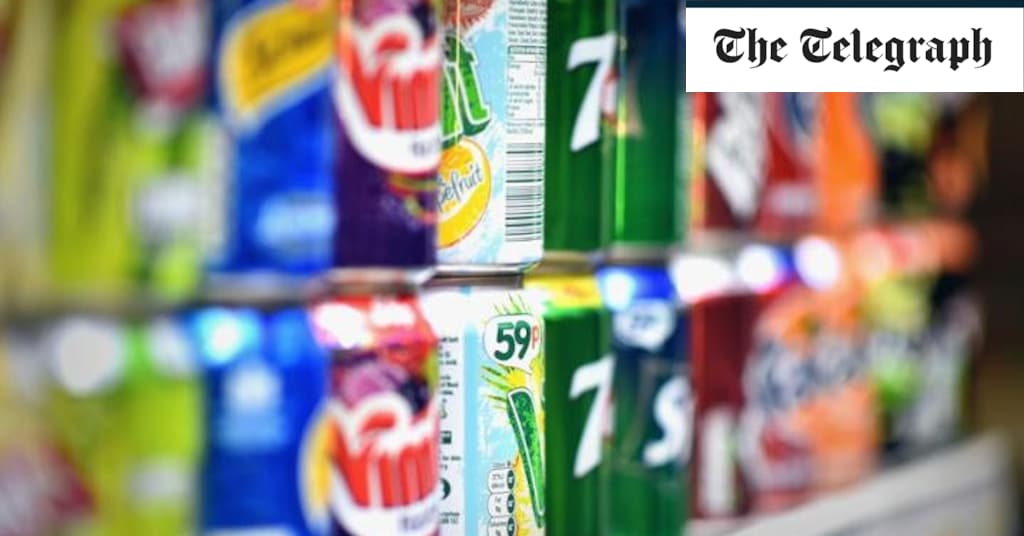
 Health & fitness2 days ago
Health & fitness2 days ago11 reasons why you should stop your fizzy drink habit in 2022
-

 Politics10 hours ago
Politics10 hours agoLabour MP urges UK government to nationalise Grangemouth refinery
-

 Science & Environment18 hours ago
Science & Environment18 hours agoHow Peter Higgs revealed the forces that hold the universe together
-
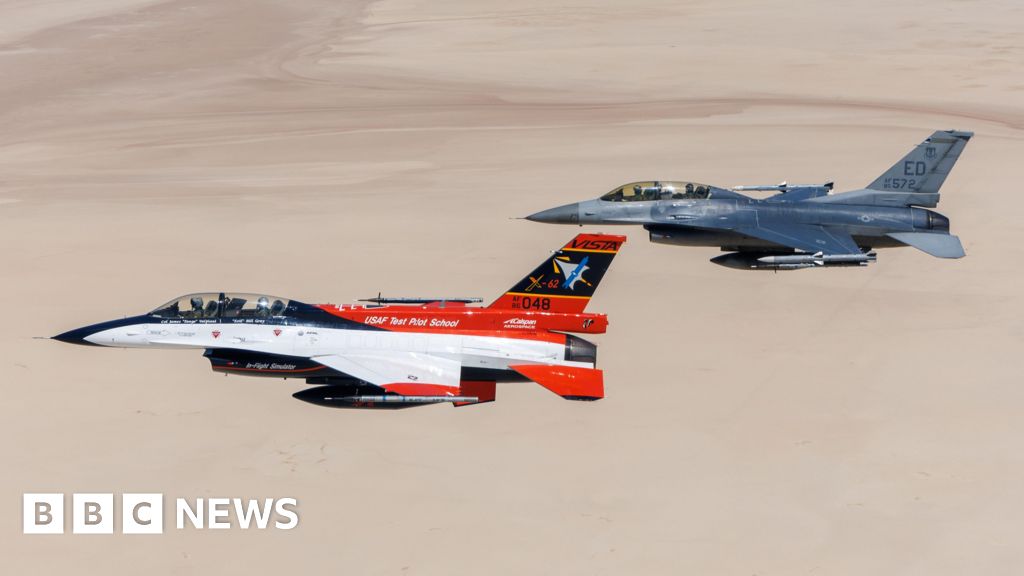
 Technology2 days ago
Technology2 days agoWhat will future aerial dogfights look like?
-

 Science & Environment13 hours ago
Science & Environment13 hours agoOdd quantum property may let us chill things closer to absolute zero
-

 Science & Environment20 hours ago
Science & Environment20 hours agoQuantum forces used to automatically assemble tiny device
-

 Entertainment9 hours ago
Entertainment9 hours ago“Jimmy Carter 100” concert celebrates former president’s 100th birthday
-

 CryptoCurrency12 hours ago
CryptoCurrency12 hours agoSEC settles with Rari Capital over DeFi pools, unregistered broker activity
-

 News10 hours ago
News10 hours agoJoe Posnanski revisits iconic football moments in new book, “Why We Love Football”
-

 Health & fitness2 days ago
Health & fitness2 days agoHow to adopt mindful drinking in 2022
-

 Health & fitness2 days ago
Health & fitness2 days agoWhat 10 days of a clean eating plan actually does to your body and why to adopt this diet in 2022
-

 Health & fitness2 days ago
Health & fitness2 days agoWhen Britons need GoFundMe to pay for surgery, it’s clear the NHS backlog is a political time bomb
-

 Health & fitness2 days ago
Health & fitness2 days agoThe maps that could hold the secret to curing cancer
-
Health & fitness2 days ago
Covid v flu v cold and how to tell the difference between symptoms this winter
-

 Science & Environment1 day ago
Science & Environment1 day agoPhysicists determined the paper most likely to give you a paper cut
-
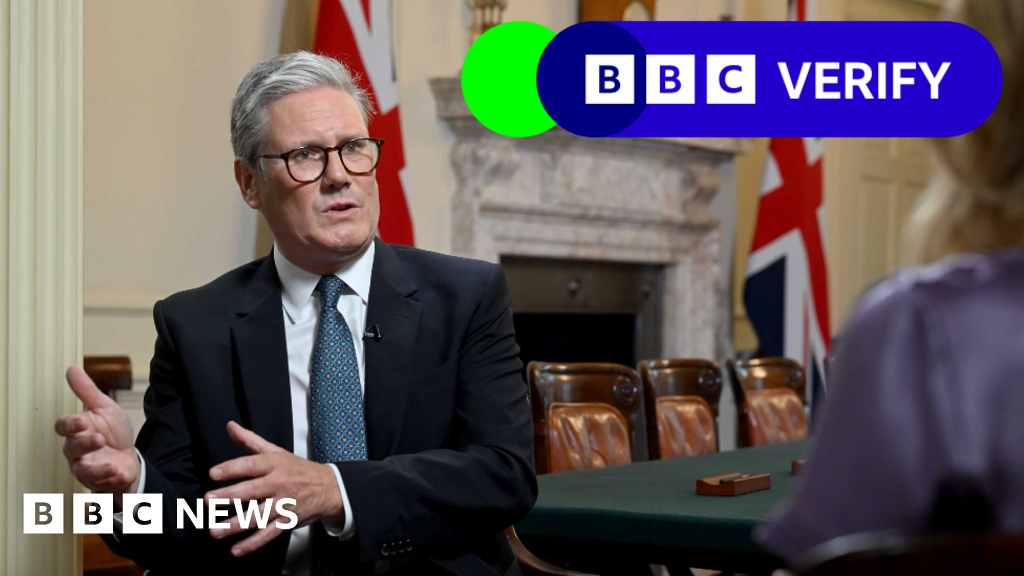
 Politics1 day ago
Politics1 day agoWill pension increase make up for loss of winter fuel payments?
-

 Science & Environment1 day ago
Science & Environment1 day agoQuantum to cosmos: Why scale is vital to our understanding of reality
-
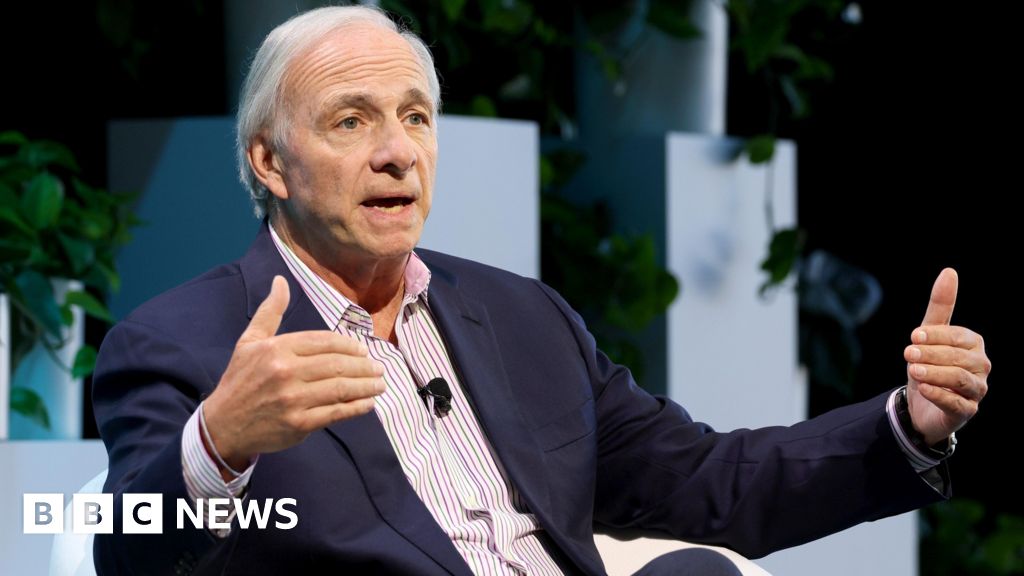
 Business3 days ago
Business3 days agoBillionaire investor Ray Dalio warns of threat to democracy
-

 Science & Environment1 day ago
Science & Environment1 day agoHow to wrap your mind around the real multiverse
-

 Technology3 days ago
Technology3 days agoTrump says Musk could head ‘government efficiency’ force
-
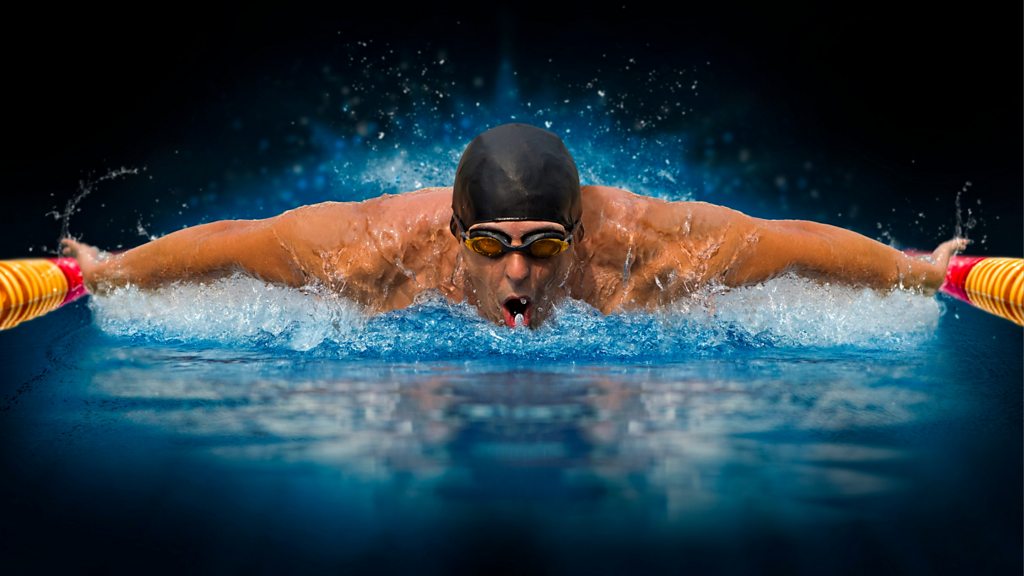
 Technology2 days ago
Technology2 days agoTech Life: Athletes using technology to improve performance
-

 Science & Environment2 days ago
Science & Environment2 days agoParticle physicists may have solved a strange mystery about the muon
-

 Science & Environment1 day ago
Science & Environment1 day agoTime may be an illusion created by quantum entanglement
-

 Science & Environment1 day ago
Science & Environment1 day agoHow the weird and powerful pull of black holes made me a physicist
-

 Politics1 day ago
Politics1 day agoIs there a £22bn ‘black hole’ in the UK’s public finances?
-

 Science & Environment1 day ago
Science & Environment1 day agoX-ray laser fires most powerful pulse ever recorded

You must be logged in to post a comment Login